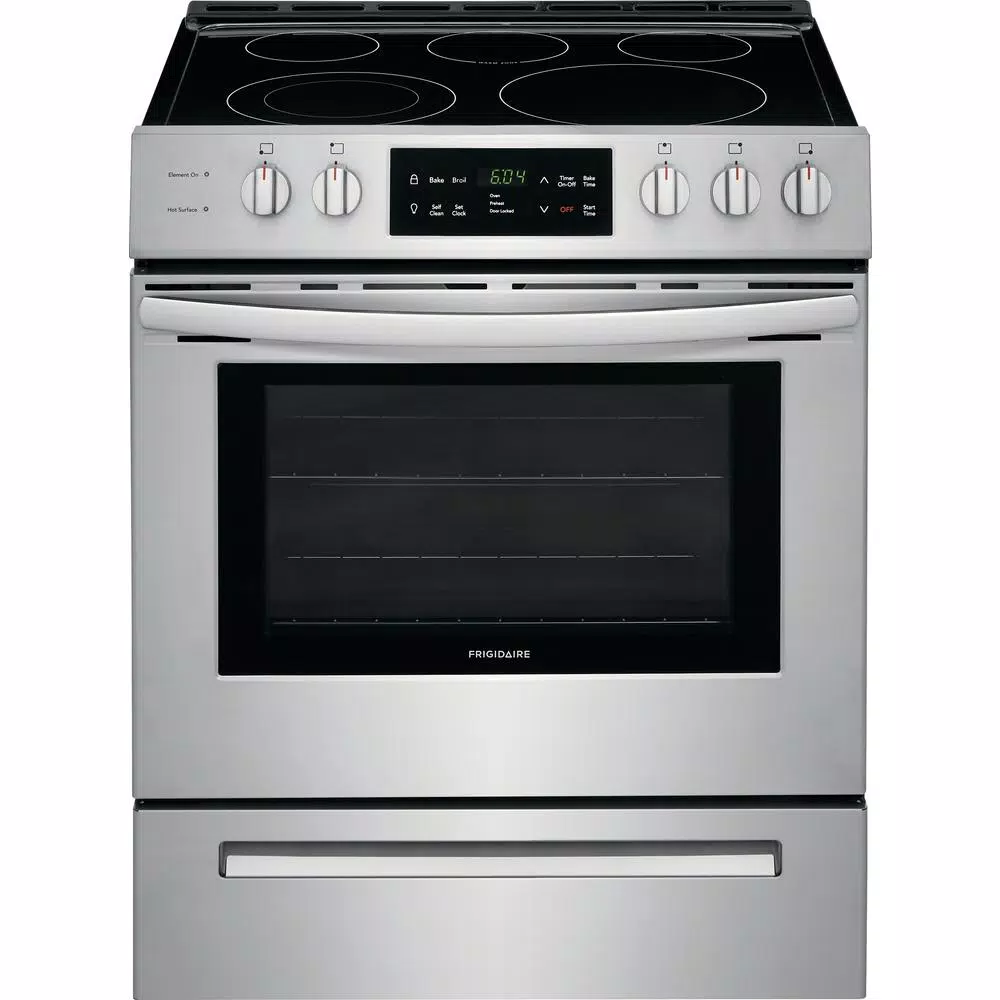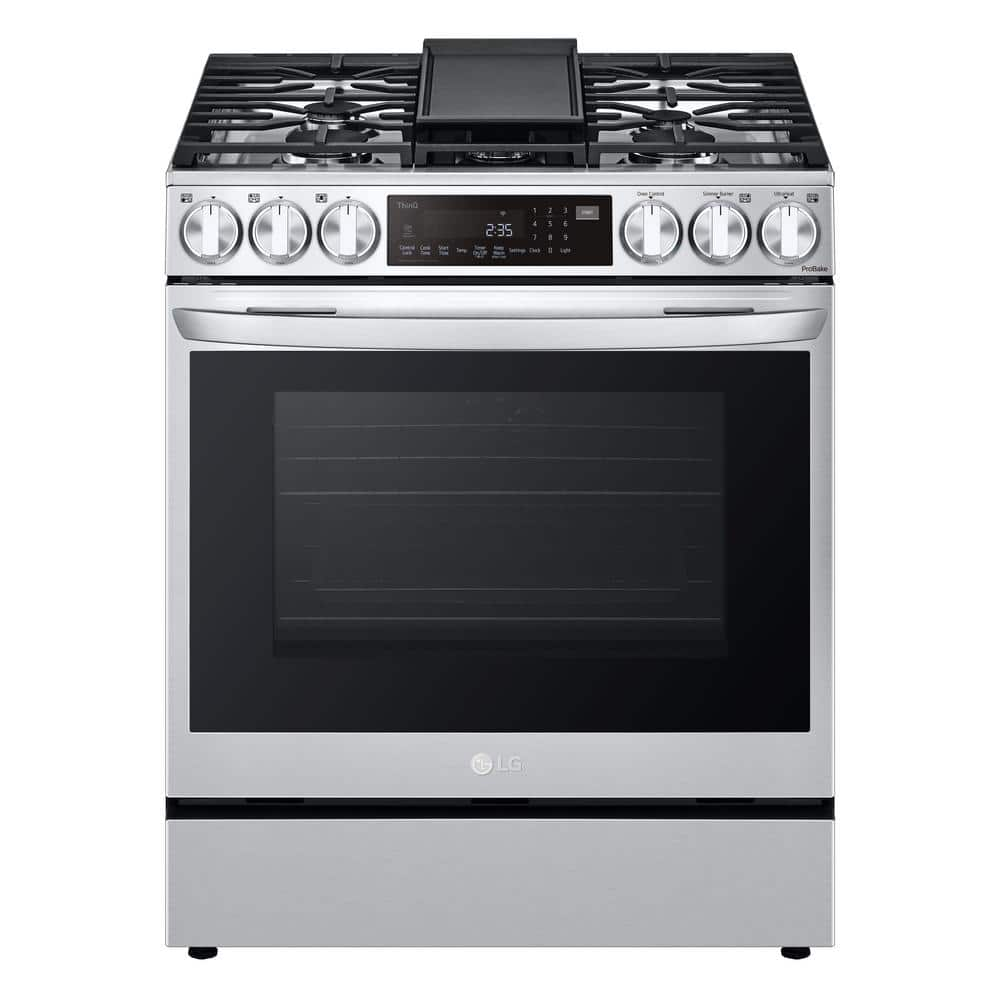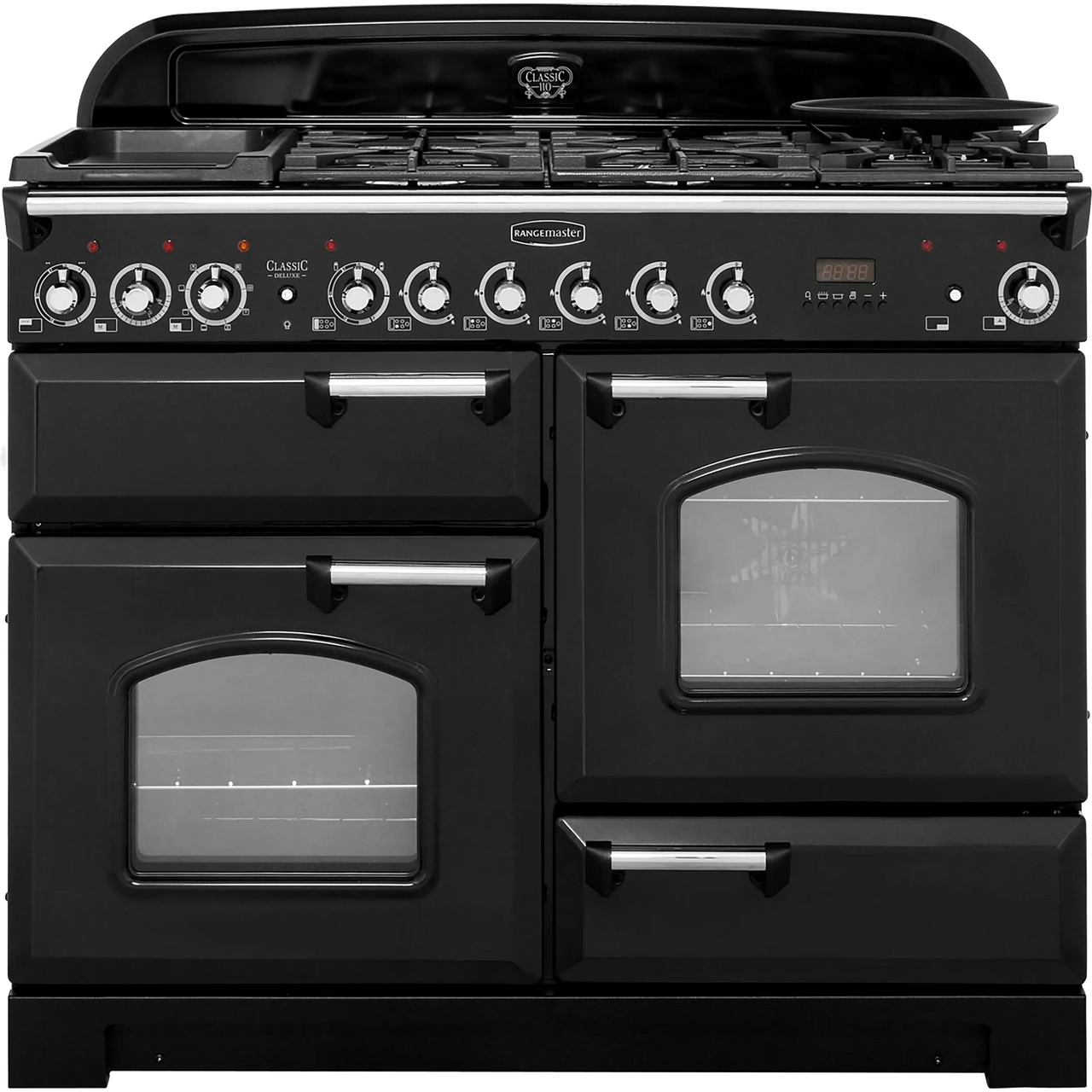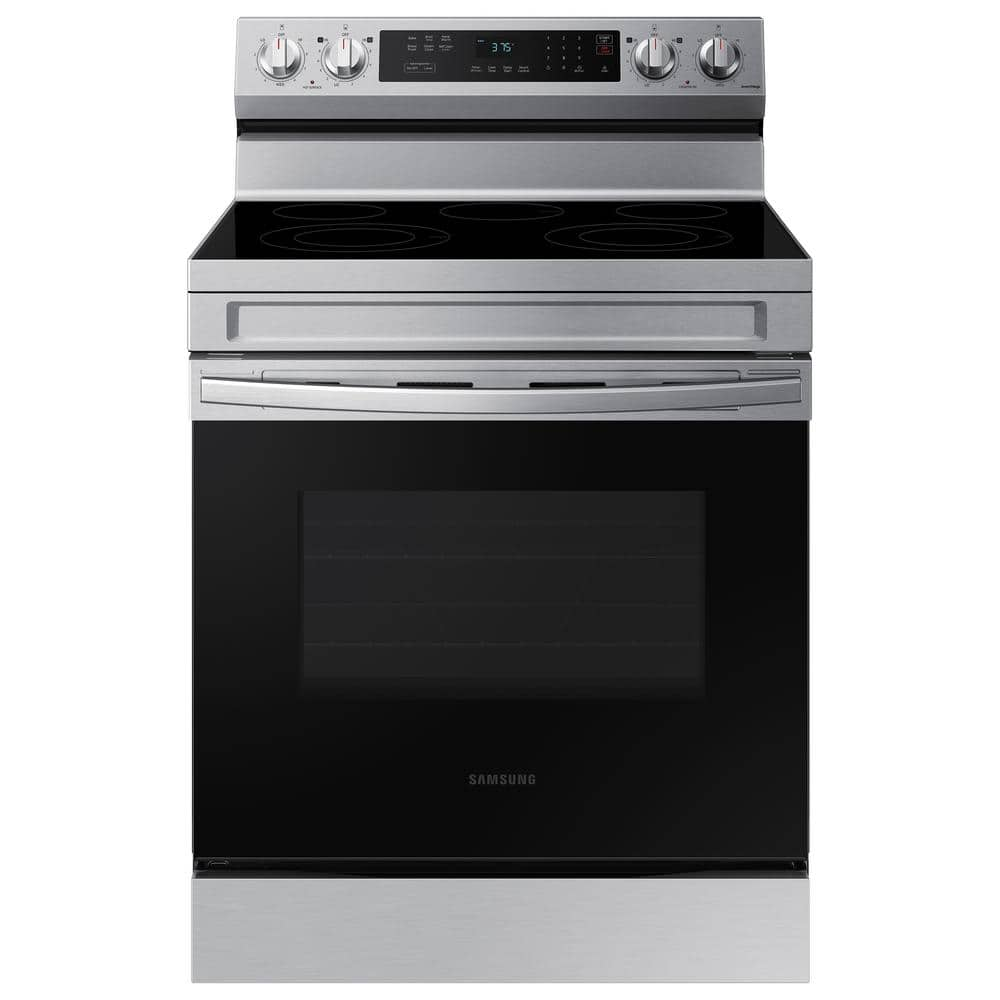Frigidaire 30 in. 5.0 cu. ft. Single Oven Electric Range with Self-Cleaning Oven in Stainless Steel
Upgrade your kitchen with a built-in look, without the remodel. Experience ultimate cooking flexibility with 5 elements. 3,000W quick-boil element.
The Frigidaire 30 in. Slide-In Front-Control Electric Range offers a 5.0 cu. ft. capacity oven and 5-element electric cooktop so you can cook more at once. Get meals on the table faster with our 3,000W element that boils faster than the traditional setting. SpaceWise expandable elements expand to meet your cooking needs – big or small. With the Store-More storage drawer, you will have extra space to store your cookware. Upgrade your kitchen and get the look of a built-in range, with the fit of a traditional freestanding range. The Frigidaire front-control range easily fits into 30 in. cutouts.
- Upgrade your kitchen and get the look of a built-in range, with the fit of a traditional freestanding range
- Get meals on the table faster with our 3,000W element, water boils faster than the traditional setting
- Your oven cleans itself, so you don’t have to. Self clean options available in 2, 3, and 4-hour cycles
- Keep food warm until everything, and everyone, is ready
- Experience ultimate cooking flexibility with a powerful radiant cooktop that has five elements designed to handle all of your cooking needs
- A hidden heating element allows you to easily keep the bottom of your oven clean
- With our extra-large 12 in. element, you have more flexibility to fit larger pots and pans
- 2 oven racks can be configured in 6 positions to fit your cooking needs
- Extra-large oven window lets you easily see what’s inside
- Limited 1-year warranty
Additional information
| Depth With Door(s) Open 90 Degrees (In.) | 45 |
|---|---|
| Oven Interior Height (in) | 18.625 |
| Oven Interior Width (in) | 24.38 |
| Product Depth x Height x Width (in.) | 26.75 x 36.625 x 29.88 |
| Range Size | 30 in. |
| Certifications and Listings | ADA Compliant,UL Listed |
| Manufacturer Warranty | 1 Year Limited |






by Jose
Its beautiful and excellent quality.
by Kathleen
Have only used it for 2 weeks, thus the 4 star rating. It seems fine, and we really like the minimal number of buttons on the front. It has the burner dials, oven light, and timer. If you want a lot of fancy options don’t get this one, but I find the more buttons, the more can go wrong.
by Jawatom
Simple and clean oven. The quick boil feature on the range is outstanding, super fast. Overall I am very happy with this purchase.
by Shaman
Love the quality and performance of my new range and the looks
by Alexanderer
I happy that bought the stove it works for me you people nuts